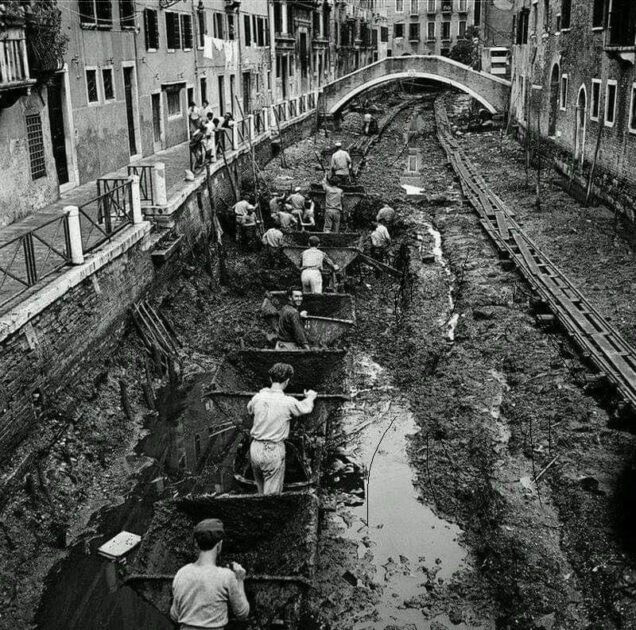In the annals of history, certain events stand out as pivotal moments in the preservation of cultural heritage and the restoration of natural beauty. One such moment occurred in 1956, when the iconic canals of Venice underwent a profound transformation through a comprehensive cleaning and draining initiative.
For centuries, the waterways of Venice had served as the lifeblood of the city, weaving through its labyrinthine streets and connecting its inhabitants in a web of commerce and culture. But by the mid-20th century, these once majestic canals had fallen victim to neglect and pollution, their waters choked with debris and their banks marred by decay.
Recognizing the urgent need to safeguard Venice’s cultural legacy, authorities embarked on an ambitious project to clean and drain the canals, restoring them to their former glory. The endeavor was as arduous as it was audacious, requiring meticulous planning, innovative engineering, and the coordinated efforts of countless workers.
The process began with the draining of the canals, a monumental task that involved diverting water away from the city center to expose the canal beds below. As the murky waters receded, a trove of treasures was revealed—artifacts dating back centuries, discarded relics of Venice’s storied past, and countless tons of sediment and debris.
With the canals laid bare, teams of workers set to the task of cleaning and dredging, painstakingly removing centuries of accumulated silt and refuse. It was a laborious process, requiring skill and precision to avoid damaging the delicate infrastructure of the city while ensuring that no trace of pollution remained.
But even as the physical work progressed, there was a deeper significance to the restoration effort—an acknowledgment of Venice’s enduring spirit and its vital importance as a cultural treasure. As the canals were cleaned and revitalized, so too was the soul of the city, reaffirming its place as a beacon of beauty and inspiration for generations to come.
The impact of the cleaning and draining initiative was profound and far-reaching, heralding a new era of conservation and stewardship for Venice’s waterways. Not only did it breathe new life into the heart of the city, but it also served as a wake-up call for the world, highlighting the fragility of our natural resources and the imperative of preserving them for future generations.
Today, as visitors glide along the shimmering waters of Venice’s canals, they are witness to the legacy of those who toiled to restore them in 1956. The beauty and majesty of these timeless waterways serve as a testament to the power of human ingenuity and determination, reminding us of the importance of protecting our shared heritage for the benefit of all.

